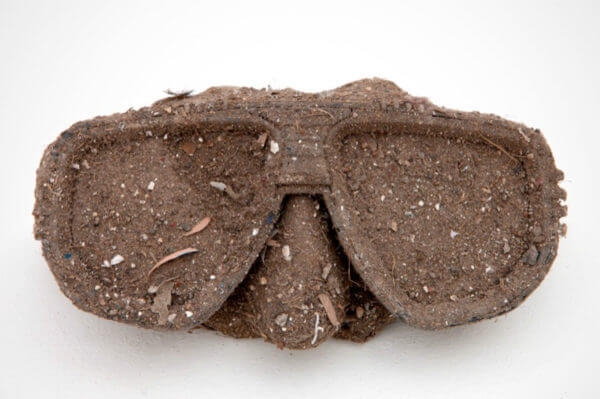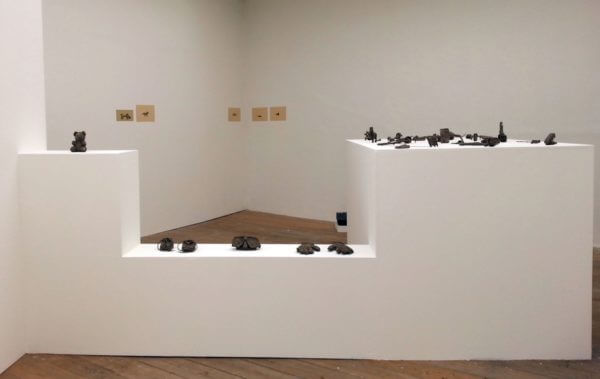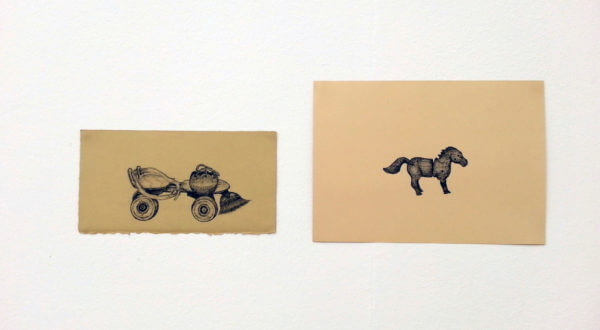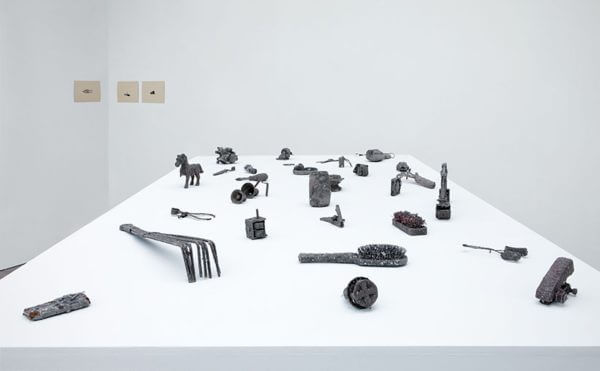
The work Amol Kisan Patil contributed to the Kamarado exhibition finds its basis in his long-term research project about Indian middle class life. Like most of the middle class people in India, Patil grew up in a chawl; the 4-5 story houses that were built in Mumbai to host workers in the 1900s. The living conditions in the chawls are extremely tough and the stories about them reveal that a middle class income in India does not protect people from living under precarious conditions, with large numbers of people in small rooms vested with parasites, no running water, and open gutters between the houses. The people who live here are for instance employed as office clerks. Each day the clerk’s offices are cleaned by sweepers and for this part of his research project, Patil decided to become a sweeper. On first sight, Sweep Walking – which, as a work of art is grounded in the tradition of Indian performance art – looks playful and much more cheerful than one would expect.

Kerstin Winking: Can you tell me something about how your experience as a sweeper informs your installation at the SMBA, Sweep Walking?
Amol Patil: I started this research into the situation of the sweepers in Mumbai almost one and a half years ago. First I had to go to the offices of the Mumbai Municipal Corporation and meet the managers of the sweepers, and I talked to them. But I also interviewed the workers about their situation. Then I started working with them. In the early mornings, I went to the buildings and offices with the sweepers, cleaned the spaces and collected dust. At six o’clock in the morning, I went there to work with them and that’s where I found the objects. The videos, which are part of the installation show my work with the sweepers. In the area where we work, people throw a lot of things on the street and there are open gutters. Because of the weird architecture, many people walk through garbage and dirty water.

KW: The installation in SMBA consists of eight drawings, depicting objects that you found on your rounds through the office spaces, as well as of a couple of objects you found elsewhere, which you covered first with glue and then with the dust that you gathered on Mumbai’s streets. What were your selection criteria for the objects?
AP: The objects are collected randomly. I got many more. They are usable objects that I came across when I worked there. However, many objects are toys and that fascinates me, because people start working as sweepers at a very early age and they stop because they become ill of the work around 34 or 38, mostly because of the dust. Dust should have a warning sign like the one put on cigarette packages. It is very poisonous.
KW: Aren’t there unions that support a change in the working conditions?
AP: The unions are only looking for political power. There are five or six, but no one really supports the workers.
KW: Are artists in India living in similarly precarious situations? And another question I have, why are you so interested in the situation of these people?
AP: My family and friends have this background too. My grandfather was a poet, but also a sweeper. A good friend of mine is a sweeper too. I’m coming from a very low caste. My grandfather was a poetry singer and my father was a scriptwriter and actor.

KW: This is not your first work that relates to the legacy of your grandfather and father. When we first met in Bangalore, you told me about your recent solo exhibition and how it was related to your grandfather’s activities as a poetry singer and your father’s scripts.
AP: Basically, my practice is in conversation with the work of my grandfather and father. My grandfather was a Powada singer and he opposed the caste system and was critical against the British occupation of India. Powada singers used to travel and perform all over the country. When the British first heard my grandfather singing, they gave him a piece of land and even a mountain in Maharashtra. Then he got trouble surviving, because he could not earn enough money with his Powada anymore. He left the village and his wife and came to Mumbai where he worked as a sweeper, but he also performed Powada at Crawford Market, one of Mumbai’s most famous markets. My father’s work dealt with the experience of living in poverty. He wrote very political scripts for theatre plays. I use both their work as inspiration for instance for my video performance Asylum of Dead Objects (2013). I was six years old when my father died and I have never seen any of his plays performed, but I saw photographs and my mother and brother told me stories about them. Asylum of Dead Objects connects to Mahardi theatre, which always uses a painted background. The rooms and landscapes in which the scenes are set are always painted in grey scale against the background of which the actors play. My video has no characters. It shows an empty room in which I myself perform several dead objects like a table van, a pendulum clock, newspapers and five doors.
KW: What kind of role do the objects in Sweep Walking perform?

AP: Sweepers are not allowed into restaurants or bars, because people think of them as being dirty and smelly. In the white cube exhibition space the dusty objects perform the act of border crossing, an act that is denied to the sweepers. Actually, the little speaker connected to the MP3-player wasn’t found whilst cleaning, but bought on a flea market. It has the function to make my thoughts about the union a part of the installation. The unions are telling people to trust them, that they are fighting for the worker’s rights and promise to advocate the worker’s issues. But they don’t. In my installation, the speaker is producing an erroneous sound. Like the chatter of the unions, it is meaningless. In its entirety, Sweep Walking is in spirit connected to the work of my grandfather and father, an exclamation against the caste system.
Originally published on Global Collaborations Online.